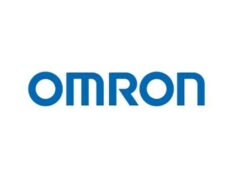 Results from the RESPOND-CRT trial have shown a 35% risk reduction in hospitalisation at two years for heart failure patients implanted with cardiac resynchronisation therapy (CRT) devices equipped with the SonR haemodynamic sensor-guided feature (LivaNova).
Results from the RESPOND-CRT trial have shown a 35% risk reduction in hospitalisation at two years for heart failure patients implanted with cardiac resynchronisation therapy (CRT) devices equipped with the SonR haemodynamic sensor-guided feature (LivaNova).
Data were presented by Jagmeet Singh (Massachusetts General Hospital, Harvard Medical School, Boston, USA) at CARDIOSTIM-EHRA EUROPACE (8‒11 June, Nice, France).
“Several studies have demonstrated the value of echo-guided optimisation of the atrio-ventricular (AV) and inter-ventricular (VV) timings in increasing the response to CRT,” Singh told delegates. However, “echo-guided optimisation of the AV and VV intervals are not routinely performed because of several limitations including resources and operator variability from these optimisations.”
Therefore, he continued, a novel device-based approach using the SonR contractility sensor—embedded in the right atrial lead—has been developed to allow continuous individualised automatic AV and VV optimisation, both at rest and during exercise.
RESPOND-CRT is a prospective, randomised, double-blinded, multicentre, non-inferiority trial aimed to assess the safety and effectiveness of this sensor in a large scale heart failure population with left ventricular ejection fraction (LVEF) ≤35%, QRS ≥120ms in left bundle branch block (LBBB) or QRS≥150ms in non-LBBB, New York Heart Association (NYHA) III or IV and without permanent atrial fibrillation.
The study enrolled 1,039 patients from 125 sites in Europe, USA and Australia from January 2012 to October 2014. In total, 998 patients received CRT-D implantation with the SonRtip lead and were randomised to receive automated resynchronisation with SonR (670 patients, 67.2±10.2 mean age, 70.4% male) or with echocardiographic pacemaker AV and VV optimisation (328 patients, 66.6±10.2 mean age, 65.5% male).
The primary efficacy endpoint was measured as non-inferiority on the proportion of responders at 12 months. Safety endpoints were defined as freedom from acute (0‒3 months) and chronic (3‒12 months) SonRtip complications. As reported by Singh, the trial met both efficacy and safety endpoints demonstrating that the SonR technology was as effective as echocardiographic optimisation with a response rate of 75% for SonR vs. 70.4%. In terms of safety, the implant success rate was 99.8% and the acute complication free-rate was 98.5% for SonR vs. 91% and the chronic complication free-rate was 99.8% for SonR vs. 94%.
Importantly, Singh said, “when looking at the rate of heart failure hospitalisation (secondary endpoint of the study) there was a 35% risk reduction in the SonR group at 24 months, which is statistically significant compared with the echocardiographic optimisation group (HR=0.65, 95% CI:[0.46‒0.92] p=0.01).”









